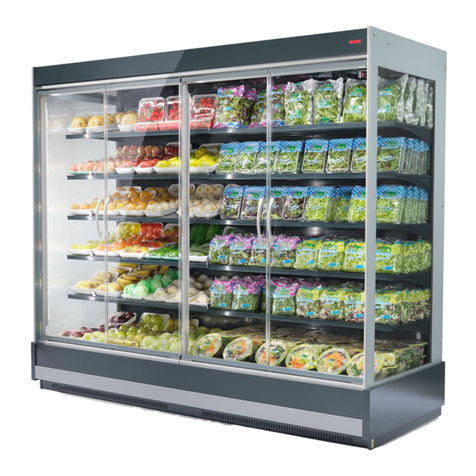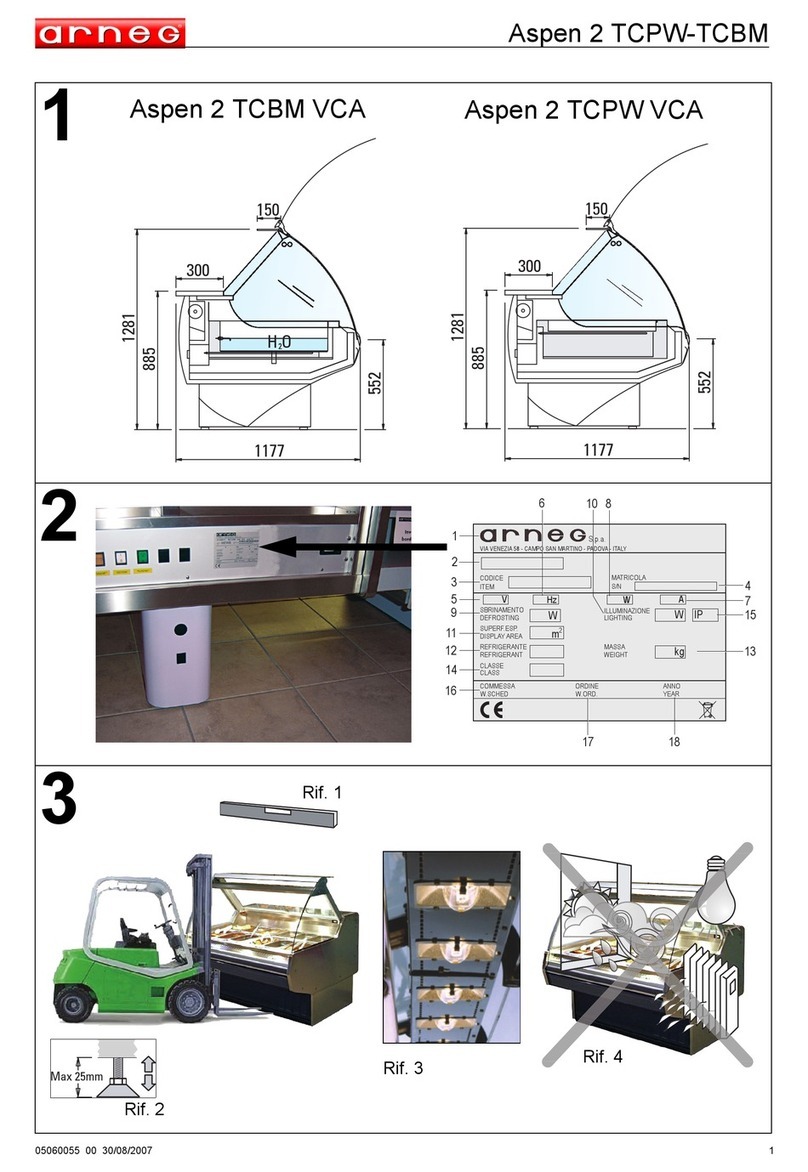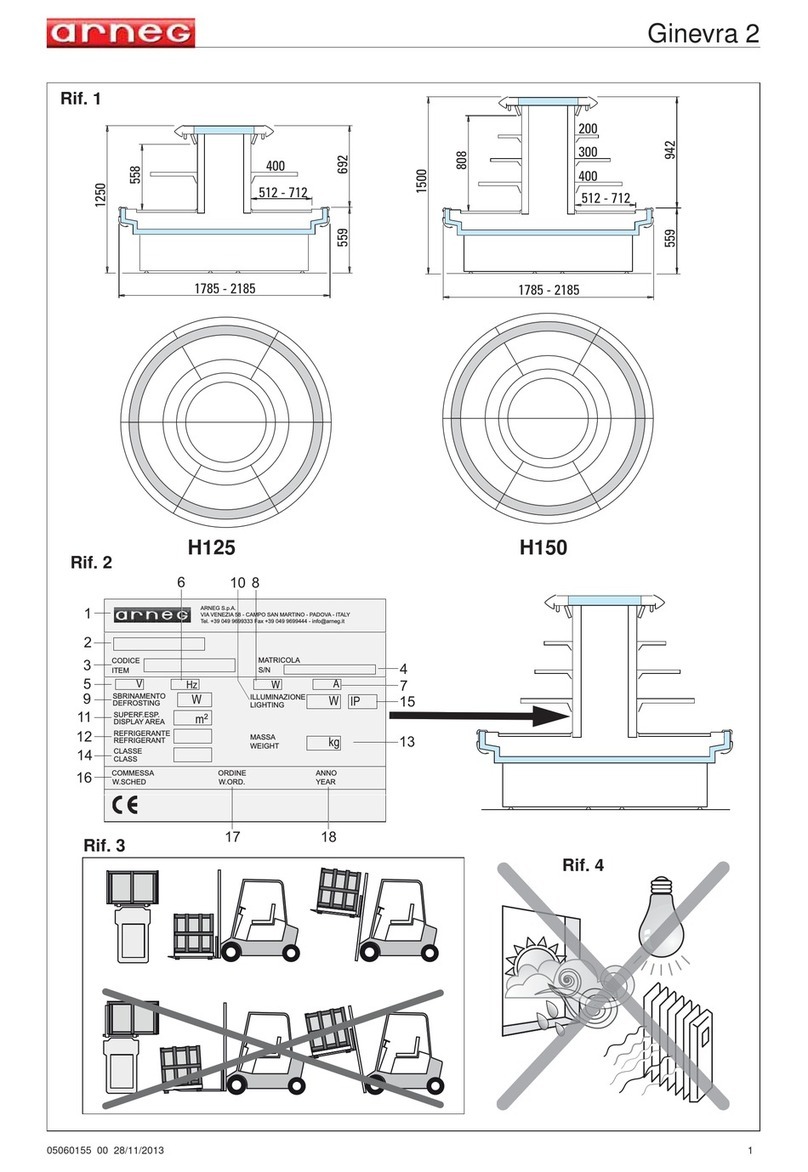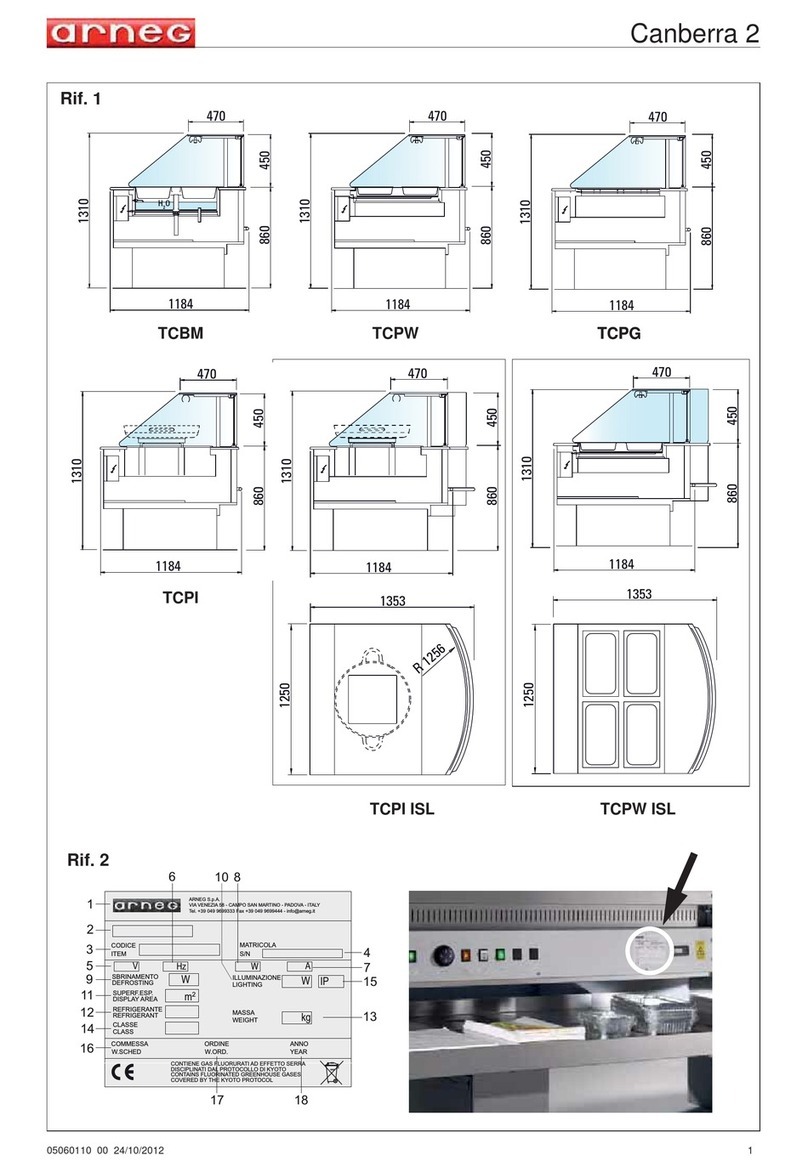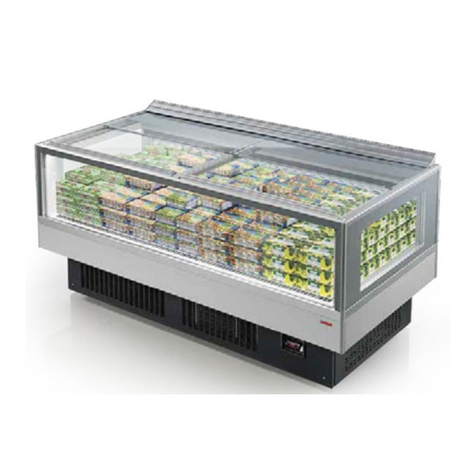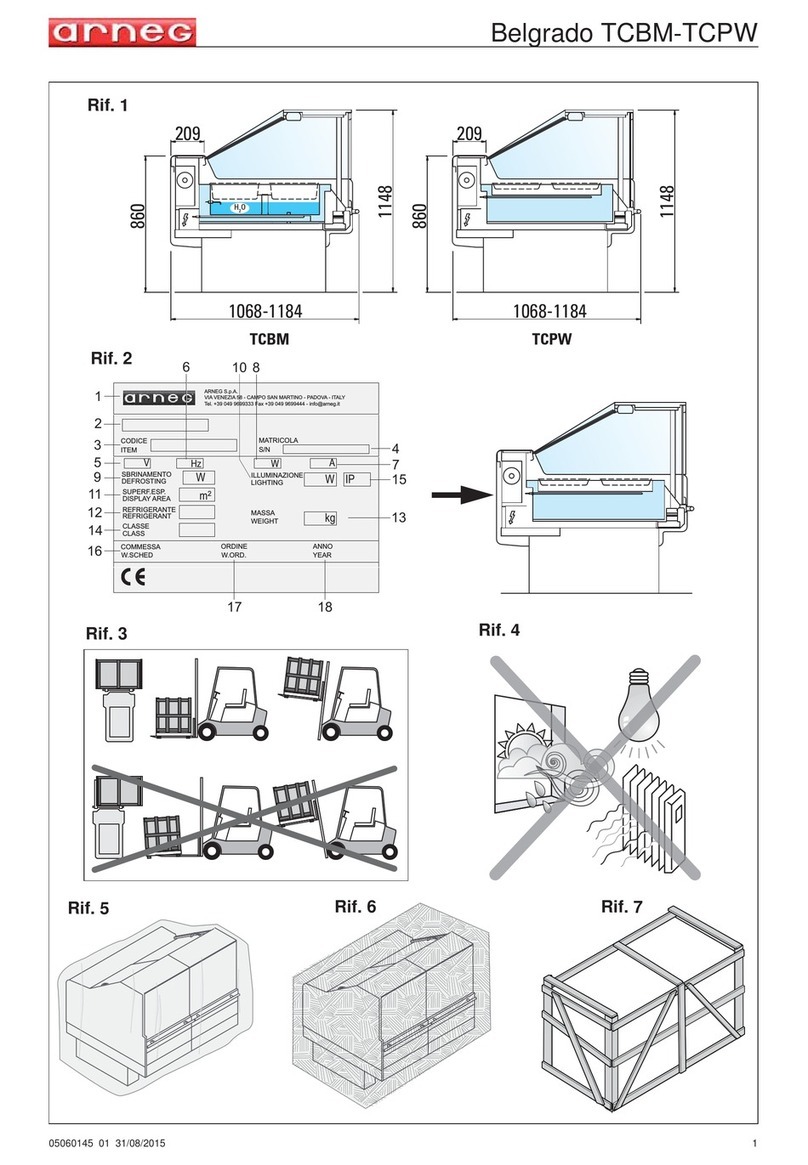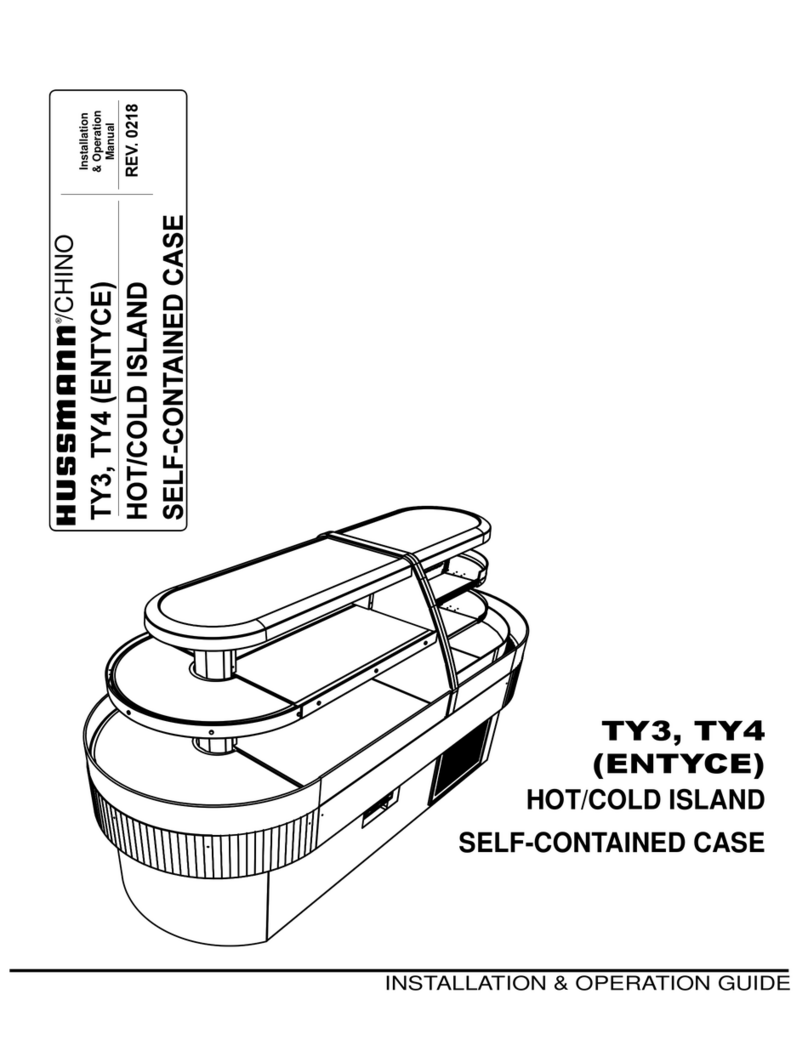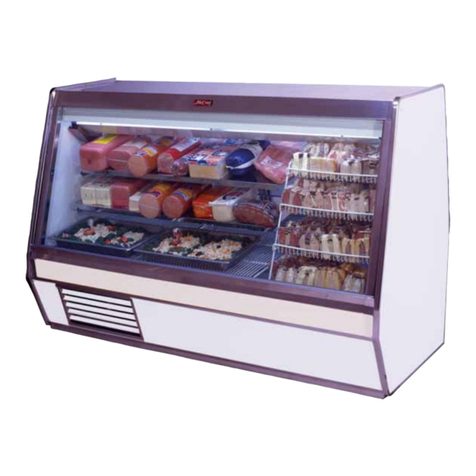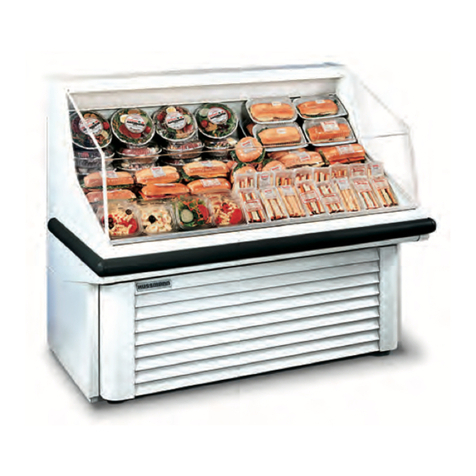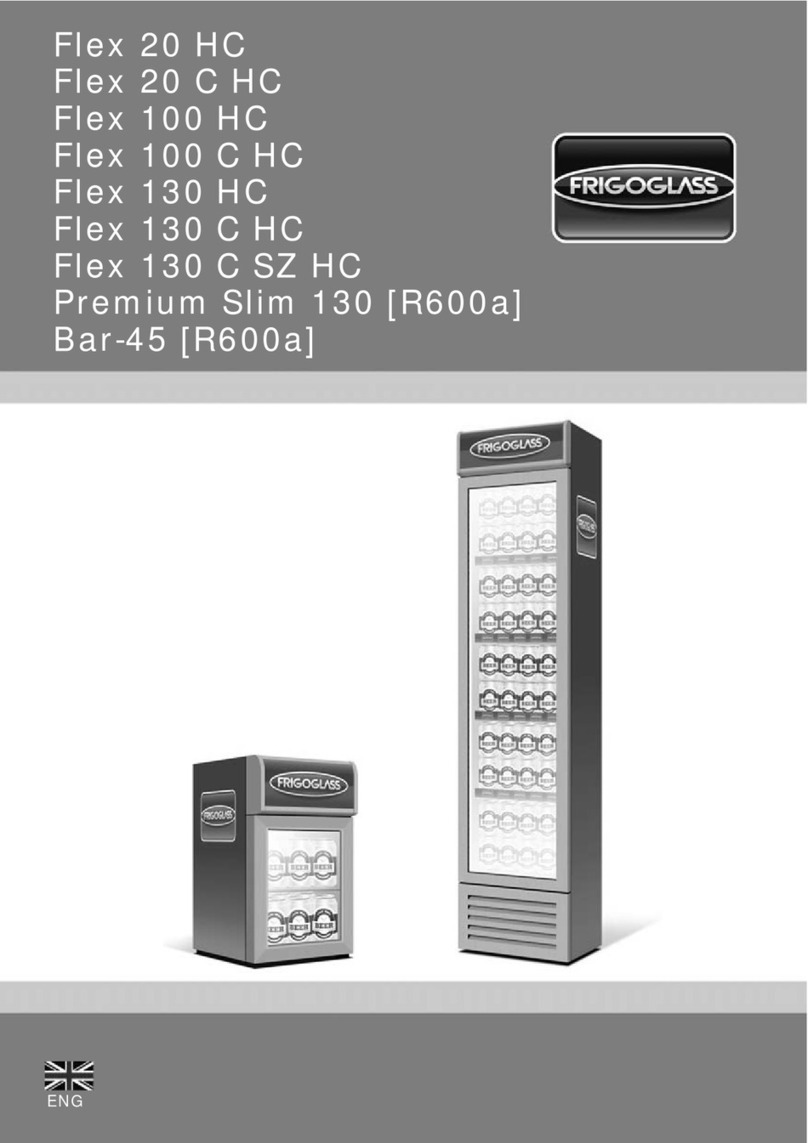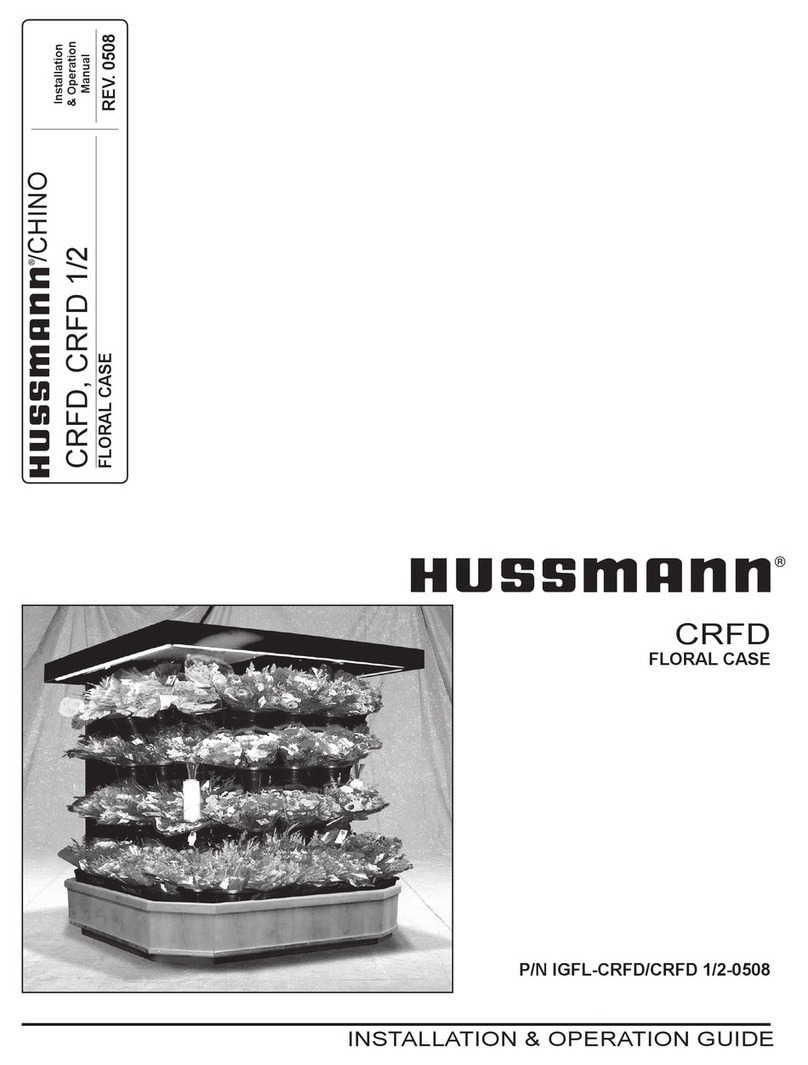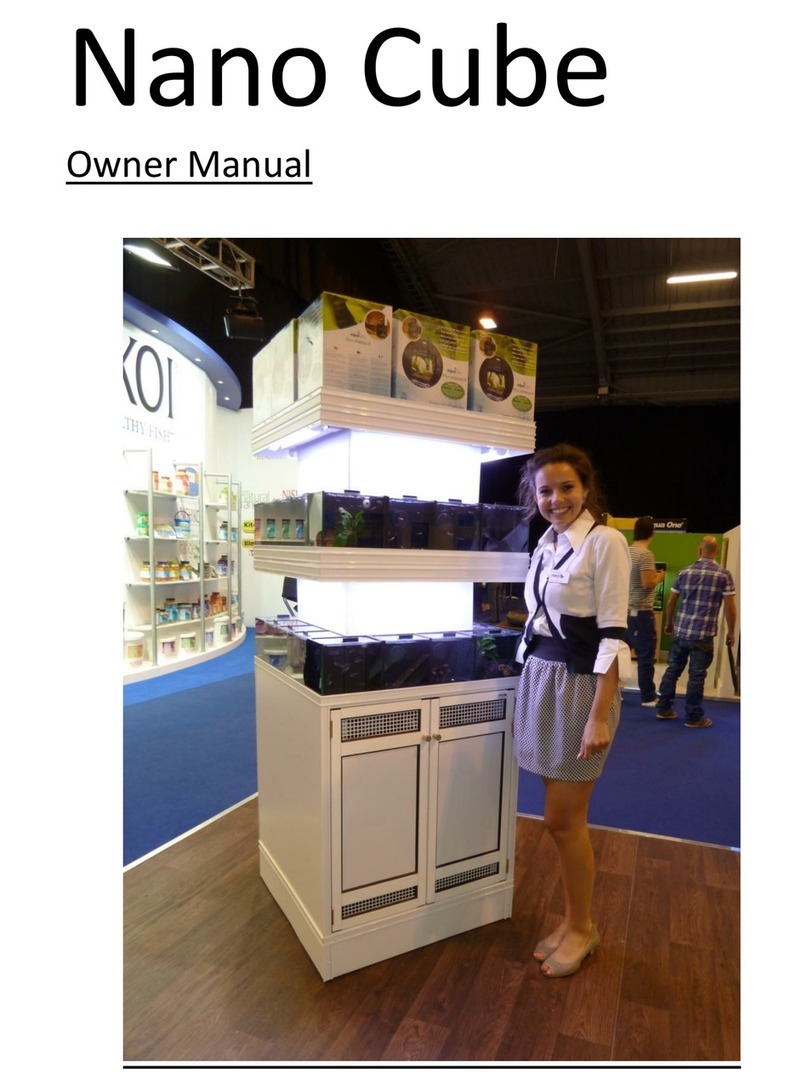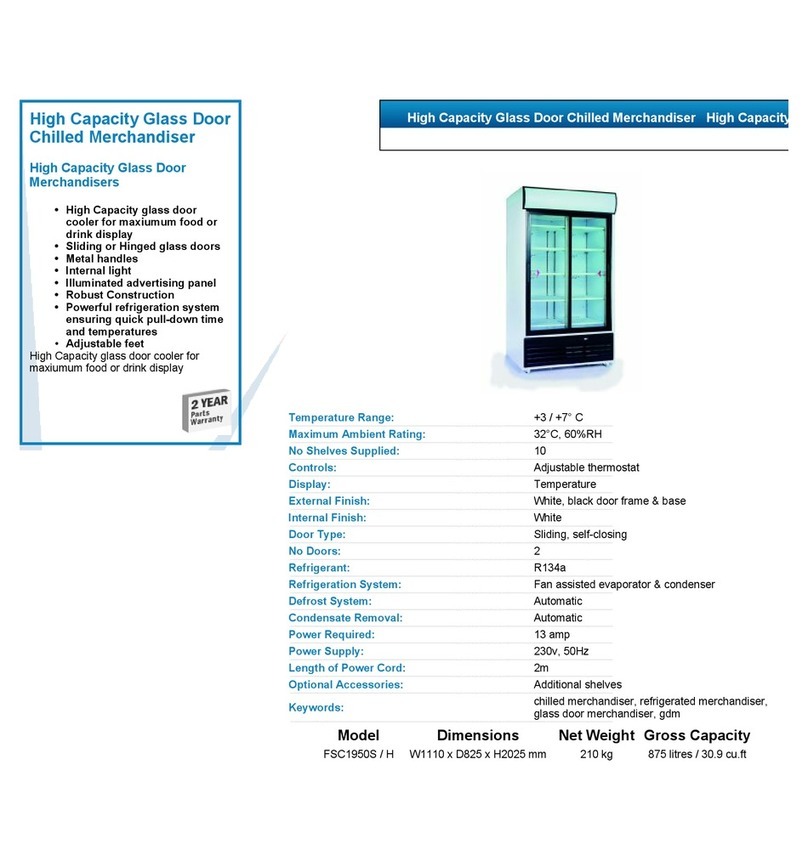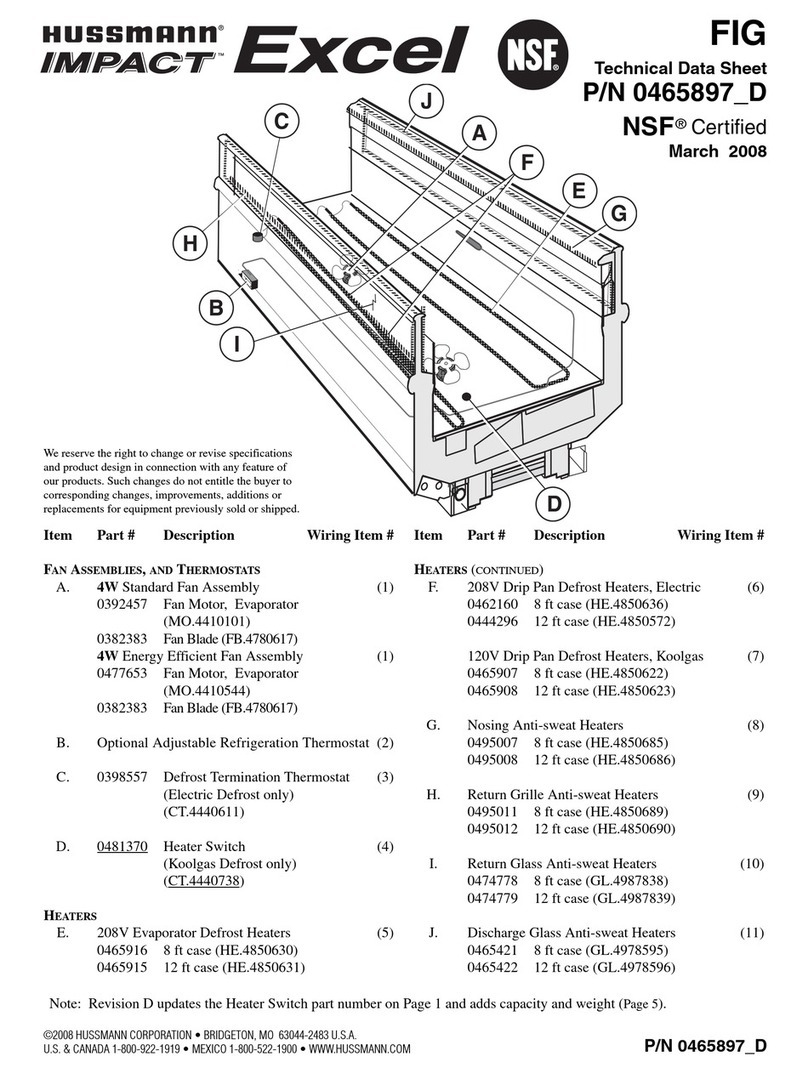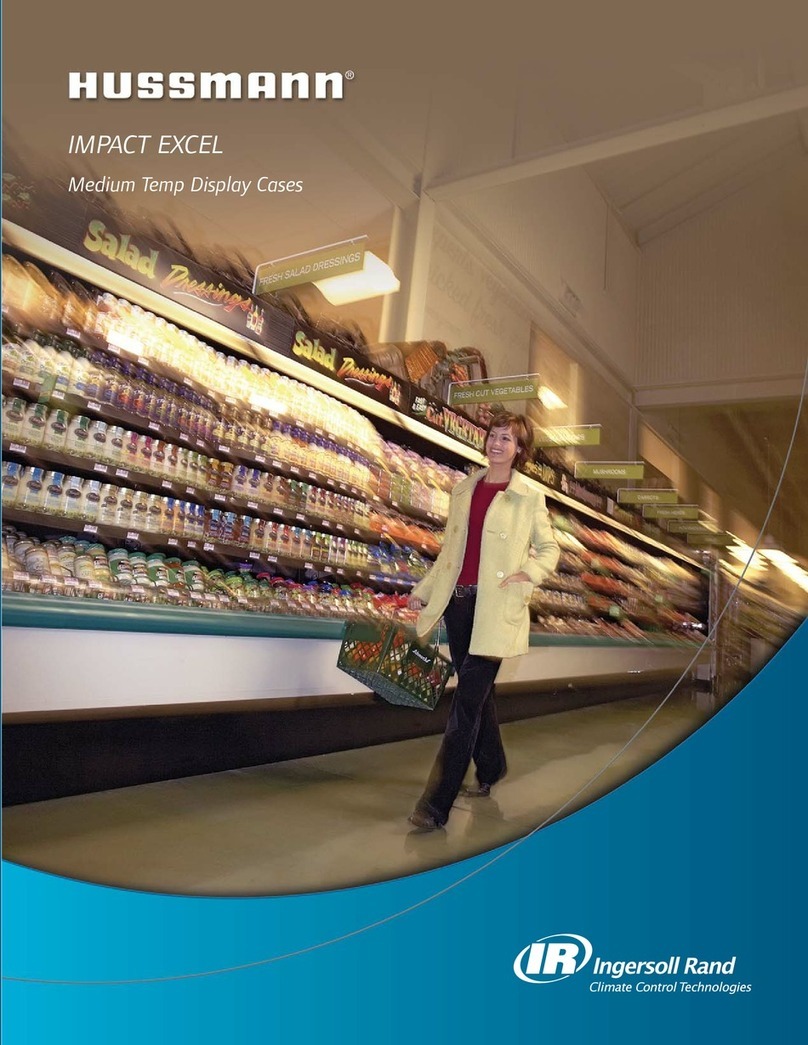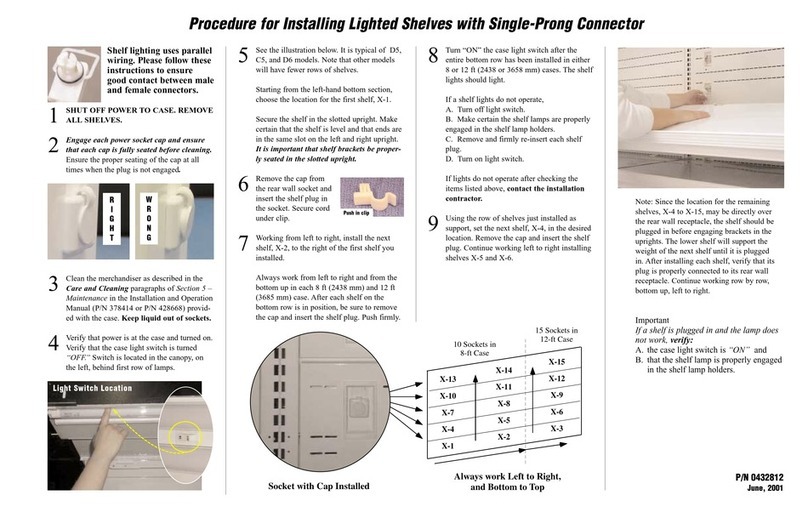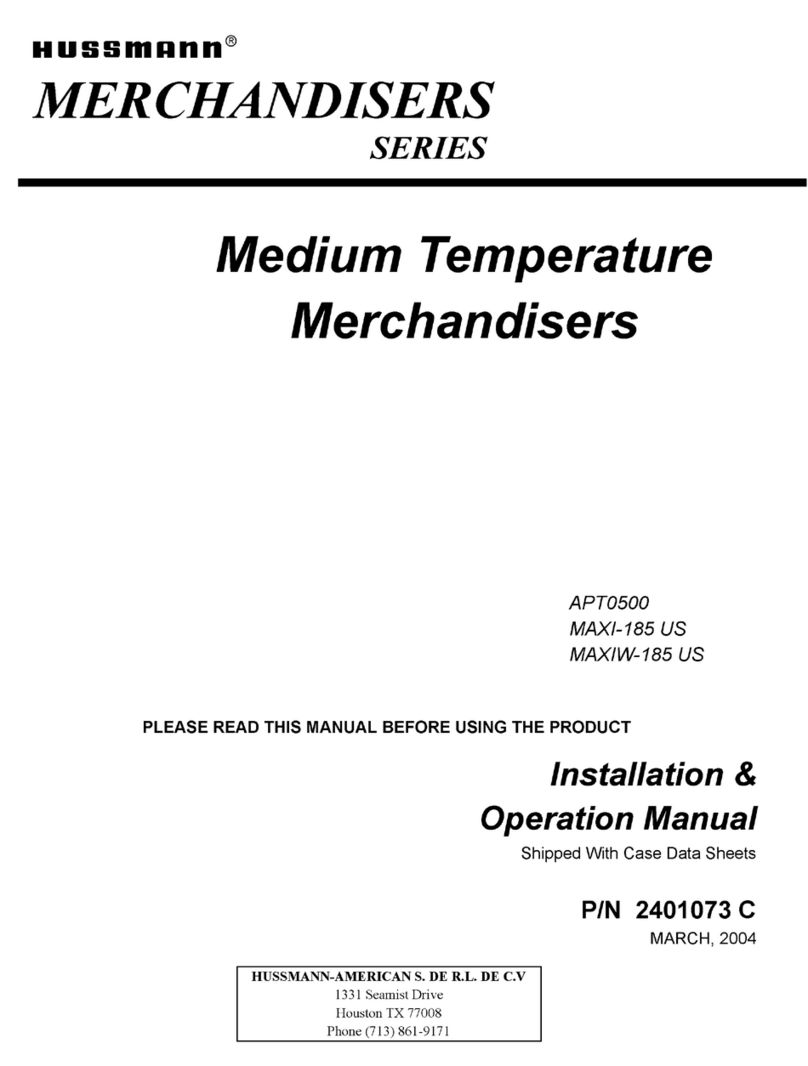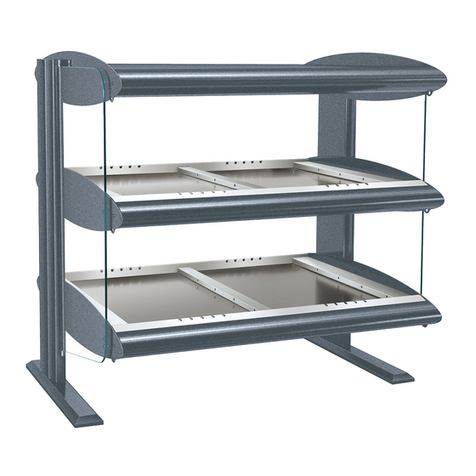
Roubaix
Italiano
605060032 03 30/06/2015
1. Introduzione - Scopo del manuale/Campo di applicazione
Questo manuale d’istruzioni riguarda la linea di mobili refrigerati Roubaix.
Le informazioni che seguono hanno lo scopo di fornire indicazioni relative a:
- Uso del mobile;
- Caratteristiche tecniche;
- Installazione e montaggio;
- Informazioni per il personale addetto all’uso;
- Interventi di manutenzione.
Il manuale è da considerarsi parte del mobile e deve essere conservato per tutta la durata dello
stesso.
Il costruttore si ritiene sollevato da eventuali responsabilità nei seguenti casi:
- Uso improprio del mobile;
- Installazione non corretta, non eseguita secondo le norme indicate;
- Difetti di alimentazione elettrica;
- Gravi mancanze nella manutenzione prevista;
- Modifiche ed interventi non autorizzati;
- Utilizzo di ricambi non originali;
- Inosservanza parziale o totale delle istruzioni;
N.B.Gli apparecchi elettrici possono essere pericolosi per la salute.
Le normative e le leggi vigenti devono essere rispettate durante l’installazione e l’impiego.
N.B.Qualsiasi persona usi questo mobile dovrà leggere questo manuale.
2. Presentazione - Uso previsto (Fig. 1)
La linea di mobili refrigerati Roubaix, è un espositore ad “ISOLA” predisposto per l’alimentazione
con unità condensatrice remota o incorporata adatto alla conservazione e vendita self service di
prodotti alimentari freschi.
Il mobile può essere inclinato di 6° ed è canalizzabile.
3. Norme e certificazioni
Le norme di riferimento secondo cui il mobile è stato collaudato ed omologato sono:
EN-ISO 23953 - 1/2; EN 60335-2-89; EN 61000-3-2; EN 61000-3-3; EN 55014
Questo mobile di Arneg S.p.A. ricade sotto la Direttiva 2002/96/CE
WEEE (Waste Electrical and Electronic Equipment) conosciuta in Italia come
RAEE (Rifiuti daApparecchiatureElettricheedElettroniche),mirataafrenarel'aumento
di detti rifiuti, a promuoverne il riciclaggio, a decrementarne lo smaltimento.
Il simbolo del bidone barrato con croce presente sulla targa del mobile dichiara che:
zil mobile è stato messo in circolazione successivamente al 13 agosto 2005
zil mobile rientra nell'obbligo di raccolta separata e non può venire trattato alla stregua
di rifiuto domestico né venire conferito in discarica
È responsabilità dell'utilizzatore consegnare il mobile, destinato allo smaltimento, al cen-
tro di raccolta specificato dall'Autorità locale per il recupero e riciclaggio WEEE (RAEE)
professionali.
Se sostituisce il mobile con uno nuovo, l'utilizzatore può chiedere al venditore il ritiro di
quello vecchio, indipendentemente dal suo marchio.
È responsabilità del produttore rendere fattibile, recupero, smaltimento e trattamento di
fine vita del proprio mobile in via diretta o per il tramite di sistema collettivo.
Violazioni allanormativaprevedonosanzioni specifiche, fissateinautonomia,conpropria
legislazione, da ciascun singolo stato appartenente alla CE e vincolante conformemente
tutti quanti sono soggetti alla normativa stessa.
Arneg S.p.A. nel considerare questo proprio mobile un WEEE (RAEE) si fa interprete delle
linee guida di Orgalime, tenendo conto del recepimento, da parte della legislazione ita-
liana, con il D.Lgs. n.151 del 15 luglio 2005, sia della Direttiva 2002/96/CE, che di quella
2002/95/CE (RoHS), relativa ad uso di sostanze pericolose nelle apparecchiature elettri-
che ed elettroniche,
Per ulteriori informazioni vedere la propria Autorità Municipale, il Venditore, il Produt-
tore. La direttiva non si applica al mobile venduto fuori della Comunità Europea.
